How to Survive a Nuclear Meltdown
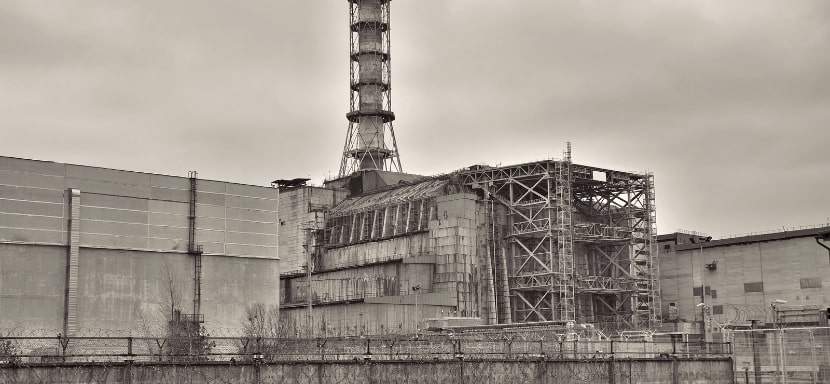
The Ultimate Guide to a Nuclear Meltdown
Nuclear power plants are historically very safe. However, if something unthinkable happens, you can take steps to protect yourself and your family.
In the United States, approximately three million people live within a 10-mile radius of a nuclear power plant. If you live near one, it would be wise to make a disaster plan for the slight chance you will one day be involved in a nuclear meltdown survival situation.
On April 26, 1986, in the Ukraine city of Pripyat, the nearby nuclear power plant Chernobyl exploded and caused a nuclear meltdown. Now, Pripyat is a ghost town. Chernobyl and Three Mile Island offer information on how we should respond to a meltdown and that they can survive but at a high cost to civilization.
Being Prepared for a Nuclear Meltdown
The possibility of a nuclear meltdown presents a significant risk, highlighting the critical need for preparedness. A nuclear meltdown occurs when a reactor’s core overheats and melts due to a cooling system failure, potentially releasing harmful radiation into the environment. Events like Chernobyl and Fukushima have shown the devastating effects such accidents can have on health, ecosystems, and societies.
Being prepared means understanding radiation, having an emergency plan, assembling a kit with essentials, and knowing decontamination procedures. It’s about individual readiness and community engagement to ensure a coordinated response. Preparedness minimizes panic and mitigates long-term impacts, making it essential for safety and resilience in the face of nuclear threats.
Understanding Nuclear Meltdowns
The concept of a nuclear meltdown has long been a source of public apprehension and intrigue, underscored by its portrayal in media and the grim reality of past accidents. A closer examination of what constitutes a nuclear meltdown, its historical precedents, and its immediate dangers can provide valuable insights into why this phenomenon warrants serious concern and preparedness.
What is a Nuclear Meltdown?
A nuclear meltdown occurs when the core of a nuclear reactor, containing fuel rods, overheats to the point where the nuclear fuel becomes so hot that it forms a molten mass. This usually results from a failure in the reactor’s cooling system, preventing the removal of excess heat. In the worst-case scenario, this molten mass can breach the containment structures designed to enclose it, potentially releasing radioactive materials into the environment. The term “meltdown” aptly describes the process: the core materials melt down, compromising the reactor’s integrity and safety.
Historical Examples of Nuclear Meltdowns
The annals of nuclear energy are marked by several catastrophic meltdowns, underscoring the inherent risks of harnessing nuclear power. These historical incidents highlight the grave consequences of system failures and the imperative for stringent safety measures.
Chernobyl Disaster (1986):
- An explosion and subsequent fire released vast amounts of radioactive particles into the atmosphere.
- The fallout spread across much of the Western USSR and Europe.
- It resulted in immediate casualties, long-term health issues, and vast areas rendered uninhabitable, affecting countless lives and the environment.
Fukushima Daiichi Nuclear Disaster (2011):
- It was triggered by a massive tsunami, leading to equipment failures and multiple nuclear meltdowns.
- Significant amounts of radioactive materials were released, causing widespread contamination.
- The disaster displaced populations led to long-term exclusion zones and necessitated decades of cleanup efforts.
These meltdowns are stark reminders of the potential for devastation, driving home the need for vigilant safety protocols and emergency preparedness in the nuclear energy sector.

The Immediate Dangers of a Nuclear Meltdown
A nuclear meltdown presents immediate and severe dangers with far-reaching consequences. The risks encompass direct health impacts from radiation exposure, extensive environmental damage, and profound social and economic disruption.
Health Risks:
- Exposure to high levels of radiation can lead to acute radiation sickness.
- Increased risk of developing cancer over time.
- The potential for fatal outcomes is heavily dependent on exposure level and duration.
Environmental Contamination:
- Significant contamination of soil and water sources leads to long-term ecological damage.
- Disruption to ecosystems adversely affects the livelihoods and habitats of numerous species.
Social and Economic Impact:
- Mandatory evacuations and the loss of homes led to widespread displacement.
- Long-term impacts on communities, including psychological distress and the destabilization of local economies.
Immediate Actions to Take
When faced with the imminent threat of a nuclear meltdown, acting swiftly and decisively is critical to ensuring your safety and that of your loved ones. Understanding what immediate actions to take can significantly reduce the risk of harm.
Here’s how you can effectively respond:
Recognizing the Warning Signs
Awareness is your first line of defense. Pay attention to:
- Alerts on TV, radio, and emergency notification systems.
- Sudden and unexplained increases in traffic or activity around a nuclear facility.
- Instructions from local authorities or emergency services.
Initial Steps to Protect Yourself and Loved Ones
Once you’ve recognized a potential threat, act immediately:
- Gather your family safely, preferably indoors, away from windows.
- Listen carefully to official sources for advice and instructions.
- Prepare to shelter in place or evacuate as directed by authorities.
Essential Supplies for Nuclear Emergency
A well-stocked emergency kit is indispensable. Make sure yours includes the following:
- Water and non-perishable food items for at least three days.
- A battery-powered or hand-crank radio to stay informed.
- A first-aid kit, including any necessary prescription medications.
- Potassium iodide (KI) tablets protect against thyroid radiation absorption.
- Protective gear, such as masks and durable clothing, to shield from radioactive exposure.
- Essential documents in a waterproof container.
Did You Know?
At the time of this article, no new nuclear power plants had been built in the United States since the meltdown at Three Mile Island in 1979.
Sheltering During a Meltdown
Finding and securing a safe shelter can substantially improve your protection against radiation exposure. Knowing how to shelter effectively can be a lifesaver at home or outside.
Here are some expert tips and strategies to ensure you’re well-prepared.
How to Choose a Safe Shelter
Selecting an appropriate shelter is crucial:
- Indoors: Choose a room with the fewest windows and external walls. Basements or central locations within a building provide the best protection from radiation.
- Public Buildings: If the home is not an option, seek shelter in sturdy public buildings like schools or community centers with basements or windowless interior rooms.
Improvising a Shelter if You Are Outside
Sometimes, you might find yourself outside when a meltdown occurs. Here’s how to improvise:
- Find the Nearest Building: Quickly get to any building to put as many walls and as much concrete, brick, and soil between you and the outside.
- Use Natural Terrain: If buildings are not an option, use natural terrain features like hills or embankments to shield yourself from the direction of the nuclear plant.
The Importance of Sealing Off Your Shelter
Once you’ve found your shelter, it’s crucial to seal it off effectively:
- Close and Lock All Windows and Doors: This helps minimize the entry of radioactive particles.
- Use Plastic Sheeting and Duct Tape: If available, seal windows, doors, and ventilation shafts with plastic sheeting and duct tape to create an additional barrier against contaminants.
- Stay Put: The longer you stay sealed in your shelter, especially in the first hours after a meltdown, the better protected you are from the highest radiation levels.
Decontamination Processes
This process involves removing radioactive particles that may have settled on your body, clothing, or personal items.
Engaging in effective decontamination measures can significantly reduce your risk of radiation exposure and its associated health effects.
Immediate Decontamination Measures
Taking swift action can drastically reduce your exposure to harmful radiation:
- Remove Outer Clothing: Since clothing can collect radioactive dust, stripping off outer layers can eliminate up to 90% of radioactive contamination.
- Shower Thoroughly: Use plenty of soap and water to wash your body. Be gentle to avoid breaking the skin, which could allow radioactive material to access your bloodstream.
- Clean Your Hair: Wash your hair with shampoo or soap and water. Avoid using conditioner, which can cause radioactive material to stick to your hair.
- Wipe Off Exposed Areas: If you can’t shower immediately, use a wet cloth to wipe down any exposed skin.
- Handle Contaminated Clothes Carefully: Place removed clothing in a plastic bag, seal it, and keep it away from living areas until authorities provide disposal instructions.
Long-term Decontamination Strategies
After initial decontamination, consider these long-term strategies to maintain a safe environment:
- Regular Cleaning: Clean your living space regularly, focusing on high-touch areas and surfaces where dust might settle. Use disposable cloths and mop heads to avoid spreading contamination.
- Monitor for Symptoms: Watch for any symptoms that might suggest radiation exposure, such as nausea, fatigue, or hair loss, and seek medical advice promptly.
- Stay Informed: Follow updates from health and emergency services for specific decontamination advice and services, such as community decontamination centers or guidelines for disposing of contaminated materials.
- Soil and Water Testing: In the longer term, testing soil and water for radiation levels can inform whether additional measures, like removing topsoil or using water filters, are necessary.
Radiation Exposure and Health
Dealing with the aftermath of a nuclear incident means confronting the possibility of radiation exposure—a daunting prospect that demands a clear understanding and prompt action for the sake of your health.
Knowing how to recognize exposure levels, identify symptoms of radiation sickness, and when to seek medical attention can be pivotal in minimizing the health impacts of radiation.
Understanding Radiation Exposure Levels
Radiation is measured in units called sieverts (Sv), which help gauge the risk associated with Exposure:
- Low-Level Exposure (<1 Sv): Often results from brief exposures and might not cause immediate health effects, but monitoring for symptoms is recommended.
- Moderate-level Exposure (1-2 Sv): This can lead to more noticeable health effects, including symptoms of radiation sickness.
- High-level Exposure (>2 Sv): Requires immediate medical evaluation due to the severe risk of health effects, including acute radiation syndrome.
Symptoms of Radiation Sickness
The symptoms of radiation sickness can range from mild to severe, depending on the exposure level:
- Mild Symptoms: Nausea, vomiting, fatigue, and skin redness typically occurring within hours to days post-exposure.
- Moderate to Severe Symptoms: Loss of appetite, hair loss, skin burns, decreased organ function, and more severe gastrointestinal issues.
- Late Symptoms: Symptoms might not manifest immediately; watch for unusual health changes in the weeks following exposure.
Seeking Medical Attention for Radiation Exposure
Knowing when and how to seek medical help is crucial:
- Immediate Consultation: If you suspect high-level exposure, seek medical attention immediately—even if symptoms have not yet appeared.
- Inform Medical Personnel: Clearly state your concern about possible radiation exposure to ensure appropriate tests and treatments are administered.
- Follow-Up: Regular medical check-ups are essential to monitor potential late-onset effects even after initial treatment.
Emergency Communication Plans
Maintaining clear and effective communication is paramount for ensuring the safety and well-being of yourself and your loved ones.
Regular communication channels might be disrupted during such emergencies, making a robust emergency communication plan essential.
Establishing a Communication Plan with Family and Friends
Having a predetermined plan can significantly reduce stress and confusion in an emergency:
- Designate a Contact Person Outside the Affected Area: Choose a friend or relative who lives far enough away that they would likely be unaffected by the same event. This person can be a central point of contact for everyone in your group.
- Create a Contact List: Compile a list of significant phone numbers, including those of family members, close friends, doctors, and local emergency services. Ensure everyone in your family has a copy, preferably digital and physical.
- Establish Meeting Points: Decide on safe, easily accessible meeting points if you cannot return home or communicate. Have one local spot and another further away if the immediate area is evacuated.
- Practice Texting: Text messages often work even when phone service overloads or is down. Make sure everyone in the family knows how to send and receive texts.
Utilizing Emergency Broadcast Systems
In a crisis, information is as crucial as water or shelter:
- Familiarize Yourself with Local Emergency Alert Systems: Many areas have systems in place for alerting residents to emergencies, including sirens, SMS alerts, and emergency broadcast stations on the radio or TV. Know what systems are used in your area and how to access them.
- Keep a Battery-Powered or Hand-Crank Radio Handy: This ensures you can receive emergency broadcasts even if the power is out. Consider a radio with a NOAA (National Oceanic and Atmospheric Administration) alert function for real-time updates.
- Subscribe to Alert Services: Sign up for any available local or national emergency alert services that can send instant notifications to your mobile device.
Nuclear Meltdown Evacuation Strategies
The decision to evacuate can be both critical and daunting. Evacuating safely requires clear thinking, swift action, and thorough preparation. Understanding when to evacuate and having a well-planned route is essential to ensure your safety and that of your loved ones.
When and How to Safely Evacuate
Deciding when and how to evacuate needs careful consideration:
- Follow Official Instructions: Authorities will provide evacuation orders if necessary. Always prioritize these instructions, as they have the most current information.
- Stay Informed: Watch emergency broadcasts and alerts closely. These channels will communicate information on when to evacuate, which areas are affected, and where to go.
- Act Quickly but Calmly: Once the evacuation order is given, act immediately. Panicking can lead to mistakes, so take a deep breath and focus on the task.
Planning Your Evacuation Route
A well-thought-out evacuation plan is your roadmap to safety:
- Identify Multiple Routes: Familiarize yourself with several potential evacuation routes. Roads may be congested or closed, so having alternatives is wise.
- Know Your Destination: Decide in advance where you will go. This could be a designated shelter, a family member’s or friend’s house, or a pre-determined public area.
- Prepare Your Vehicle: Keep your car fueled and ready with an emergency kit stored inside. If you don’t have a car, know the local evacuation transportation options available.
- Pack Essentials: Have a go-bag for each family member, including necessary supplies like water, food, clothing, medications, and essential documents.
Survival Supplies Checklist for a Nuclear Meltdown
Having a well-prepared emergency kit can be the difference between panic and preparedness.
Assembling and maintaining a survival supplies checklist ensures that you and your loved ones have the necessary resources to weather the initial days of the crisis safely.
Here’s a guide on what to include in your emergency kit and tips on storing and rotating your supplies to keep them ready immediately.
Essential Items for Your Emergency Kit
Your kit should be comprehensive yet portable. Include the following essentials:
- Water: At least one gallon per person per day, for at least three days, for drinking and sanitation.
- Food: A three-day supply of non-perishable food items that don’t require cooking, such as canned goods, energy bars, and dried fruits.
- Radio: A battery-powered or hand-crank radio to stay informed about news and emergency broadcasts.
- Flashlight: With extra batteries. Consider headlamps for hands-free operation.
- First Aid Kit: Stocked with bandages, antiseptic wipes, pain relievers, and necessary prescription medications.
- Personal Hygiene Items: Such as toothbrushes, toothpaste, soap, and wet wipes.
- Copies of Important Documents, Including identification, medical records, and bank account records, are stored in a waterproof container.
- Extra Cash: Since ATMs and credit card systems may not be operational.
- Portable Charger: This keeps mobile phones and other small devices charged.
- Maps of the Area: In case GPS on your phone is unavailable or unreliable.
Storing and Rotating Your Supplies
Proper storage and rotation are crucial to ensure your emergency kit remains useful when needed:
- Cool, Dry, and Accessible: Store your kit in a cool, dry place that is easily accessible. Avoid areas prone to flooding, or that might be cut off in the event of structural damage.
- Check Expiration Dates: Regularly check the expiration dates on food, water, batteries, and medications—set reminders to replace items as needed, ideally every six months to a year.
- Inspect and Update: As your family’s needs change (e.g., new medical prescriptions, changes in dietary needs, or the addition of new family members), update your kit accordingly.
- Practice Using Your Kit: Familiarize yourself and your family with the items in the kit. Practicing can help identify any gaps or overlooked items.
Mental Health and Coping Strategies
While physical safety is paramount during a nuclear meltdown, it’s equally vital to address the psychological impact such a crisis can have on you and those around you. Coping with the stress, anxiety, and uncertainty that come with emergencies is crucial for maintaining mental well-being.
Coping with Stress and Anxiety
Managing your stress and anxiety effectively is the first step towards helping others:
- Stay Informed, but Don’t Overexpose Yourself to News: Keeping updated is essential, but constant exposure to distressing news can heighten anxiety. Limit your news intake and use reliable sources.
- Practice Mindfulness and Relaxation Techniques: Techniques such as deep breathing, meditation, or yoga can significantly reduce stress levels and improve your mental state.
- Maintain Routine as Much as Possible: Keeping to your regular daily routine can provide a sense of normalcy and control amidst chaos.
- Reach Out for Support: Sharing feelings with friends, family, or a mental health professional can relieve and strengthen your resilience.
Supporting Children and Vulnerable Individuals
Children and vulnerable individuals may find it particularly challenging to cope with the stress of a nuclear meltdown:
- Communicate Openly: Encourage children to express their feelings and fears. Be honest yet reassuring about the situation in a way that is appropriate for their age.
- Maintain Routines: Keeping to regular routines as much as possible provides children and vulnerable adults a sense of safety and normalcy.
- Offer Extra Comfort and Reassurance: Increased affection and reassurance can help alleviate fears and anxieties.
- Monitor Media Exposure: Shield children from distressing news reports and social media. Information should be tailored to be age-appropriate and not overwhelm them.
- Seek Professional Help if Needed: If you notice persistent signs of distress or changes in behavior, consider seeking help from a mental health professional experienced in dealing with traumatic stress.
Recovery and Cleanup After a Meltdown
The journey towards recovery and cleanup after a nuclear meltdown is crucial yet challenging. It involves restoring the physical environment and rebuilding community spirit and trust in safety measures.
As you prepare to navigate this path, understanding how to return home safely and effectively participate in community recovery efforts can make a significant difference.
Returning Home Safely After a Meltdown
Before you consider returning home, prioritize safety and ensure conditions are conducive to a healthy living environment:
- Wait for Official Clearance: Never return to your home until authorities have declared it safe. Premature returns can expose you to harmful levels of radiation.
- Inspect for Physical Damage: Check your home for structural damage, broken windows, and other hazards that could pose immediate risks.
- Use Protective Gear: Wear protective clothing, gloves, and masks during your return to guard against lingering contaminants.
- Ventilate Your Home: Open windows and doors to air out the property, reducing any volatile contaminants that may have entered.
- Document the Condition of Your Property: Take photos or videos as evidence for insurance claims and any potential government assistance programs.
Participating in Community Recovery Efforts
Engaging in community efforts can accelerate recovery and foster a sense of unity and support:
- Volunteer for Local Cleanups: Join organized groups or initiatives for decontamination and cleanup activities. Your participation can make a tangible difference in the recovery process.
- Support Affected Individuals: Offer support to neighbors and community members struggling. This can range from providing temporary housing to sharing resources.
- Stay Informed About Recovery Plans: Attend community meetings and stay updated on recovery plans and progress. Being informed enables you to contribute effectively and advocate for your community’s needs.
- Promote Mental Health Awareness: Encourage participation in community mental health support services. Recovery isn’t just about physical rebuilding but also addressing the psychological impacts.
Long-term Survival Strategies
Navigating the aftermath of a nuclear meltdown requires immediate action, long-term planning, and resilience.
As we look beyond the initial crisis, focusing on sustainable living and the rebuilding of communities becomes essential.
These efforts ensure survival and a return to thriving, vibrant community life.
Sustainable Living Post-Meltdown
Adopting sustainable living practices can significantly mitigate the impacts of a nuclear meltdown and enhance community resilience:
- Grow Your Food: Consider starting a community garden or growing your food at home using safe, uncontaminated soil. This reduces reliance on potentially contaminated external food sources.
- Implement Renewable Energy Sources: Invest in solar panels or other renewable energy solutions to decrease dependence on external power sources, which may be disrupted during a meltdown.
- Water Safety and Conservation: Collect and store rainwater for non-drinking purposes and install water purification systems to ensure a safe drinking supply.
- Waste Reduction and Recycling: Encourage and practice waste reduction, composting, and recycling to minimize environmental impact and reduce strain on municipal services.
Rebuilding Communities
The strength of a community is critical in overcoming the long-term challenges post-meltdown:
- Community Planning and Preparedness: Work with local leaders and organizations to develop comprehensive disaster preparedness and response plans, integrating the lessons learned from the meltdown.
- Strengthening Community Bonds: Organize regular community meetings, workshops, and social events to strengthen bonds, share resources, and support emotional healing.
- Education and Awareness: Promote education around nuclear safety, sustainable living practices, and emergency preparedness to empower current and future generations.
- Advocacy and Communication: To prevent future incidents, advocate for stronger nuclear safety regulations and transparent communication from authorities and nuclear facilities.

Safety Precautions for the Future
In the aftermath of a nuclear meltdown, looking forward and implementing safety precautions for the future are crucial steps to prevent history from repeating itself.
Learning from past nuclear incidents and actively advocating for enhanced atomic safety measures are fundamental to safeguarding our communities and the environment.
Here’s how you can play a part in promoting a safer future.
Learning from Past Nuclear Meltdowns
Understanding previous meltdowns provides valuable lessons:
- Educate Yourself and Others: Familiarize yourself with the causes and consequences of past nuclear disasters. Share this knowledge to raise awareness about the risks and the importance of safety precautions.
- Analyze Safety Protocols: Study how and why safety measures failed in the past. Encourage discussions on improvements and updates to current protocols.
- Promote Transparency: Support transparency in the nuclear industry. Information on plant operations, safety procedures, and risk assessments should be accessible to the public.
Advocating for Nuclear Safety Measures
Active advocacy plays a crucial role in enhancing nuclear safety:
- Support Regulatory Improvements: Advocate for stringent regulatory standards for nuclear facilities. This includes demanding regular inspections, maintenance, and upgrades to safety systems.
- Encourage the Use of Advanced Technology: Support research and the adoption of newer, safer nuclear technologies. Advances in reactor design can significantly reduce the likelihood of a meltdown.
- Participate in Public Forums: Engage in public forums and discussions on nuclear safety. Voice your concerns and suggestions to policymakers and industry leaders.
- Promote Alternative Energy Sources: Advocate for investment in renewable energy sources as safer alternatives to nuclear power. This reduces the overall reliance on atomic energy and its associated risks.
Understanding Radiation Measurement and Monitoring
Any radiation-related incident calls for a clear understanding of radiation measurement and monitoring.
Being informed about measuring and interpreting radiation levels is crucial for ensuring personal and community safety.
Tools for Measuring Radiation
Several tools can help you measure radiation levels, providing vital data to make informed decisions:
- Geiger Counters: The most well-known radiation detection tool, capable of detecting and measuring ionizing radiation. It’s useful for quick spot checks of environmental radiation.
- Dosimeters: These devices measure an individual’s or an object’s exposure to radiation over time, providing data on accumulated exposure. They are essential for people working in or around potentially radioactive areas.
- Scintillation Counters: These are more sensitive than Geiger counters and are used to measure specific types of radiation and low-level contamination.
- Radiation Survey Meters: Professionals use these devices to analyze radiation types and levels in an environment in detail.
Interpreting Radiation Levels
Understanding the data these tools provide is critical to interpreting radiation risks:
- Know the Units: Radiation levels are typically measured in sieverts (Sv) or millisieverts (mSv) for dose rates and becquerels (Bq) or curies (Ci) for activity. Please familiarize yourself with these units and what they represent.
- Assessing Risk: Background radiation levels vary globally but are usually about 0.1 to 0.2 mSv per month. Comparing measured levels to these background levels can help determine risk.
- Seek Expert Advice: If you detect elevated radiation levels, consult health authorities or experts for guidance. They can help interpret the data and advise on necessary precautions.
- Continuous Monitoring: After an incident, radiation levels can change over time. Constant or regular monitoring is essential to stay informed about your environment’s safety.
Nuclear Meltdown Preparedness Training and Education
Being adequately prepared can significantly mitigate risks to your health and safety. This preparation isn’t just about having supplies ready and involves comprehensive training and continuous education on emergency response, radiation safety, and disaster resilience.
Training Programs and Resources
Equipping yourself with knowledge and skills through formal training programs can be a game-changer:
- Seek Out Emergency Preparedness Courses: Many organizations and community centers offer courses on emergency preparedness, including how to respond to nuclear disasters. These can range from online modules to in-person workshops.
- Radiation Safety Training: Specific training on radiation safety, including understanding radiation types, exposure limits, and decontamination procedures, can be invaluable. Look for courses offered by health institutions or regulatory bodies.
- First Aid and CPR Certification: Basic first aid and CPR skills are essential in emergencies. Certification courses are widely available through organizations like the Red Cross.
- Utilize Online Resources: Countless free online resources can help you learn about nuclear preparedness. Government agencies, such as the Environmental Protection Agency (EPA) and the Federal Emergency Management Agency (FEMA), provide valuable information.
Importance of Continuous Learning and Practice
Staying informed and regularly practicing what you’ve learned ensures that you’re always prepared:
- Regular Review and Drills: Review your emergency plans and conduct drills with your family. Practicing evacuation routes, sheltering procedures, and emergency communication plans can help automate these responses in a real crisis.
- Stay Updated on Best Practices: Emergency preparedness advice and best practices can evolve. Keep up-to-date with the latest recommendations from trusted sources.
- Engage with Community Preparedness Efforts: Joining community emergency response teams (CERTs) or local preparedness groups can provide ongoing training opportunities and strengthen community resilience.
- Share Knowledge with Others: Passing on what you’ve learned to family, friends, and community members reinforces your knowledge and builds a more informed and prepared community around you.
Wind Blows
The direction of the wind will determine who is and who isn’t told to evacuate an area after a nuclear meltdown.
Global and Environmental Impact
the ripple effects on our planet and its inhabitants are profound and far-reaching. Understanding such events’ global and environmental impact is crucial, not just for the sake of knowledge but as a call to action to mitigate future risks.
The Effect on Wildlife and Ecosystems
Nuclear accidents unleash a cascade of consequences on the natural world:
- Radioactive Contamination: Animals and plants near a meltdown can absorb radioactive materials, leading to genetic mutations, population declines, and the disruption of local ecosystems.
- Bioaccumulation: Radioactive particles can accumulate up the food chain, impacting species far removed from the initial contamination site. Predators at the top of the food chain are particularly at risk.
- Habitat Destruction: The immediate area around a nuclear disaster may become uninhabitable, leading to biodiversity loss and species displacement from their natural habitats.
International Efforts to Prevent Future Meltdowns
The global community recognizes the importance of collaborative efforts to enhance nuclear safety:
- Strengthening International Regulations: Organizations like the International Atomic Energy Agency (IAEA) work towards developing and enforcing global safety standards for nuclear installations.
- Sharing Best Practices: Countries with nuclear capabilities share insights and advancements in safety technology and emergency response strategies, fostering a culture of continuous improvement.
- Research and Innovation: International collaboration supports research into safer nuclear technologies, such as next-generation reactors with enhanced safety features and lower risk profiles.
- Public Awareness and Education: Global initiatives aim to educate the public about nuclear energy, safety protocols, and environmental preservation, empowering individuals to advocate for responsible energy use.
Myths and Misconceptions About Nuclear Meltdowns
In nuclear energy and safety, myths and misconceptions abound, fueled by dramatizations in media and a general lack of public understanding. It’s crucial to separate fact from fiction, especially regarding nuclear meltdowns, to ensure that fear and misinformation do not overshadow informed decision-making and preparedness efforts. Myths and Misconceptions
Myth: Nuclear meltdowns always lead to immediate and widespread loss of life.
Reality: While nuclear meltdowns pose significant risks, the immediate impact on human life varies greatly depending on the incident’s severity, the response measures in place, and the distance from the meltdown. Nuclear safety and emergency response advances have significantly reduced the potential for widespread harm.
Myth: All radiation is deadly and will cause immediate health problems.
Reality: Radiation exists naturally in our environment, and our bodies are exposed to small amounts daily. Health risks from radiation depend on the dose and duration of exposure. Low levels of radiation exposure do not automatically lead to severe health issues.
Myth: Nuclear power is the most dangerous source of energy.
Reality: When considering the entire lifecycle of energy sources, including extraction, operation, and waste management, nuclear power has one of the lowest mortality rates per unit of electricity generated, especially compared to fossil fuels.
Facts vs. Fiction in Nuclear Safety
Fact: Nuclear reactors are designed with multiple safety systems.
Reactors are equipped with numerous safety and containment systems designed to prevent accidents and mitigate their impact should they occur.
Fact: Evacuation plans and safety drills can save lives.
Regularly practiced evacuation plans and safety drills ensure communities are better prepared to respond effectively in the event of a nuclear incident.
Fact: International cooperation enhances nuclear safety.
Through organizations like the International Atomic Energy Agency (IAEA), countries collaborate on improving nuclear safety standards, sharing best practices, and advancing technological innovations.
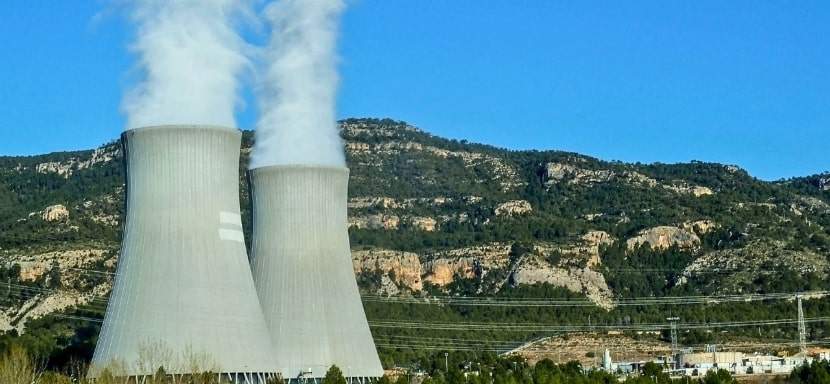
Historical Nuclear Meltdowns
Several significant and historical nuclear meltdowns have marked the history of atomic energy, each profoundly impacting public perception, regulatory standards, and safety protocols in the nuclear industry.
Here’s a list of the most famous and historical nuclear meltdowns:
- Chernobyl Disaster (1986) – Located in the Soviet Union (now Ukraine), the Chernobyl disaster is often considered the worst nuclear accident in history. A catastrophic explosion and fire released large amounts of radioactive particles into the atmosphere, spreading over much of Europe.
- Fukushima Daiichi Nuclear Disaster (2011) – Triggered by a massive tsunami following a 9.0 magnitude earthquake off the coast of Japan, the Fukushima disaster led to multiple reactor meltdowns and significant releases of radioactive materials into the environment.
- Three Mile Island Accident (1979)—The most severe accident in U.S. commercial nuclear power plant history occurred at the Three Mile Island plant in Pennsylvania. A partial core meltdown in one of the reactors released small amounts of radioactive gases, although it did not result in any immediate deaths or injuries.
Conclusion: Mastering the Art of Surviving a Nuclear Meltdown Through Preparedness and Education
In our journey to understanding how to survive a nuclear meltdown, we’ve traversed a landscape marked by the importance of readiness, knowledge, and the unwavering spirit of resilience. This guide has equipped you with the tools and strategies essential for navigating the immediate aftermath of such a dire event and illuminated the path toward long-term recovery and sustainability.
Recap of Key Points on Surviving a Nuclear Meltdown
- Immediate Actions and Safety Measures: We’ve emphasized the critical first steps to take upon learning of a meltdown, including seeking shelter, understanding decontamination processes, and recognizing the significance of having a well-stocked emergency kit.
- Mental Health and Community Support: The psychological impact of a nuclear incident cannot be overstated. Supporting one another, maintaining open lines of communication, and ensuring mental health resources are accessible are pivotal in the recovery process.
- Education and Continuous Learning: Knowledge is your most powerful tool. Educating yourself and your community about nuclear safety, emergency preparedness, and the environmental impacts of meltdowns prepares everyone for the unexpected.
- Global Efforts and Environmental Considerations: Acknowledging and participating in international efforts to enhance nuclear safety and protect our environment ensures that we look after our immediate surroundings and contribute to worldwide safety measures.
The Importance of Preparedness and Education
The journey doesn’t end here. Preparedness is an ongoing process, a lifestyle choice that empowers you and those around you to face unforeseen challenges confidently. Education is crucial in demystifying the risks associated with nuclear energy and promoting a culture of safety and awareness.
As we conclude, remember that the steps you take today to prepare for a nuclear meltdown can significantly alter the outcome of such events. Your actions can lead to a safer, more informed community ready to face challenges head-on.
Let’s carry forward the lessons learned, continually seeking to improve our readiness and extend our knowledge.
Together, we can forge a future where the specter of nuclear meltdowns, while daunting, is met with preparedness, resilience, and the collective strength of an informed society.
FAQs on Nuclear Meltdown Procedures
What should I do immediately after hearing about a nuclear meltdown?
How long should I stay in a shelter during a nuclear meltdown?
Please stay in your shelter until local or national authorities declare it safe to leave. The duration can vary depending on the severity of the meltdown and prevailing wind and weather conditions that could spread radiation. It could be anywhere from a few days to a couple of weeks. Always follow official guidance.
Can radiation contaminate food and water?
Yes, radioactive materials from a nuclear meltdown can contaminate food and water. To reduce the risk of consuming contaminated food or water, rely on pre-packaged, unopened food and bottled water stored in your emergency kit or provided by emergency services. Avoid consuming food from outside or water from open sources without official confirmation that it’s safe.
How can I find out if I have been exposed to radiation?
Signs of radiation exposure can include nausea, fatigue, vomiting, and hair loss. However, for a definitive assessment, seek medical evaluation at a hospital or health facility equipped to conduct radiation exposure assessments. Authorities may also set up monitoring stations to screen evacuees for radiation exposure following a meltdown.
What are the long-term health effects of exposure to a nuclear meltdown?
Long-term health effects of radiation exposure can include an increased risk of cancer, cardiovascular disease, cataracts, and potential reproductive issues. The severity and types of long-term effects depend on the level of radiation exposure and the duration of that exposure.
How can communities better prepare for potential nuclear meltdowns?
Communities can prepare by establishing and regularly updating emergency preparedness plans, conducting drills, and ensuring that all residents know what to do during a nuclear meltdown. It’s also crucial to have effective communication systems in place to quickly disseminate information during an emergency. Additionally, local authorities can work with nuclear facilities to ensure safety measures are rigorously maintained and that emergency response capabilities are robust and regularly tested.
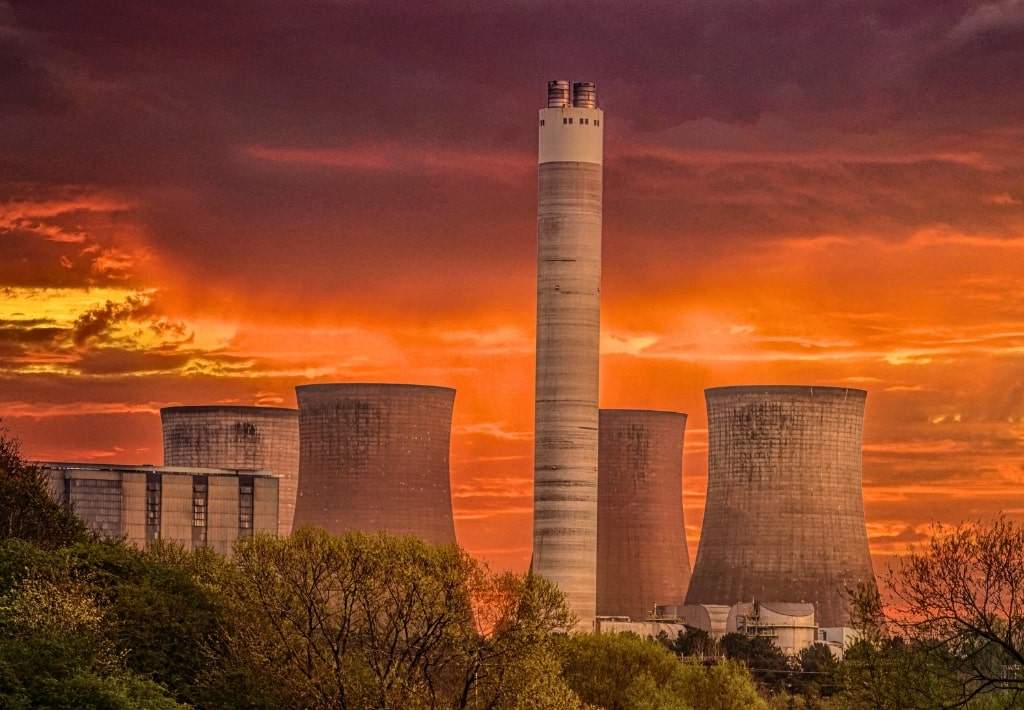
More Doomsday Scenarios
How to Survive a Worldwide Communications Breakdown
Imagine waking up to silence. Your phone doesn’t buzz, your email won’t load, and even your local…
How to Survive a Worldwide Economic Collapse
When we hear “economic collapse,” it conjures images of chaos, scarcity, and instability. While the…
How to Survive a Robot Uprising
Robots: one minute they’re cleaning our homes or delivering pizza, and the next, they’re plotting…
How to Survive a Totalitarian Regime
In a world where governments control everything from curfews to thoughts, knowing how to…
How to Survive an EMP Attack
Imagine waking up to find your entire world plunged into darkness—no electricity, no functioning…
Recent Survival Posts
How to Survive a Layoff
Layoffs feel personal—even when they’re not. One day, you’re responding to Slack messages and forwarding…
How to Survive a Drug Test
I never imagined I’d be so emotionally invested in a paper cup. But there I was, standing under the fluorescent…
How to Survive an Interrogation
If you’ve ever been caught in the crosshairs of an overly enthusiastic mall cop or stared down by someone…
How to Survive a Nightclub Shooting
Nightclubs pulse with life—lights flashing, music pounding, bodies packed tight on the dance floor. It’s a place to…
How to Survive a Bachelor Party
A bachelor party is a delicate mix of celebration, chaos, and questionable decision-making, wrapped…
More Doomsday Survival Scenarios

How to Survive a Worldwide Economic Collapse
When we hear "economic collapse," it conjures images of chaos, scarcity, and instability. It is one of the doomsday scenarios that could happen in reality, and while the thought can be overwhelming, preparing for such a situation doesn't require an underground bunker...

How to Survive a Robot Uprising
Robots: one minute, they’re cleaning our homes or delivering pizza, and the next, they’re plotting global domination. How did we get here? Somewhere between asking Alexa for the weather and teaching AI to write poetry, we gave machines just enough intelligence to turn...
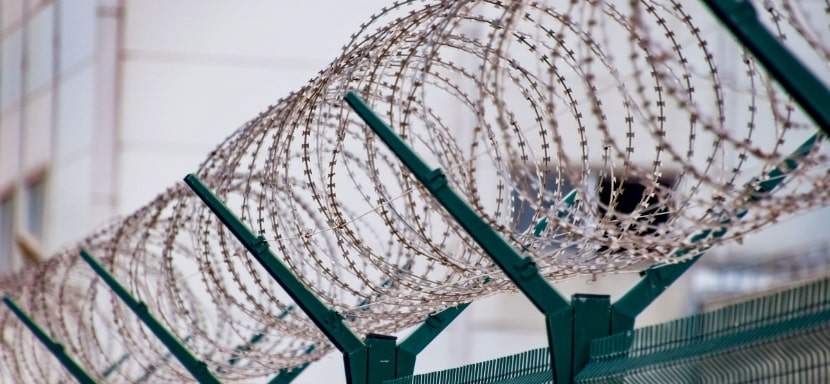
How to Survive a Totalitarian Regime
In a world where governments control everything from curfews to thoughts, knowing how to survive a totalitarian regime is crucial. History shows us that such regimes crush freedoms, spread fear, and twist truth into propaganda. But don't panic—if people survived in...
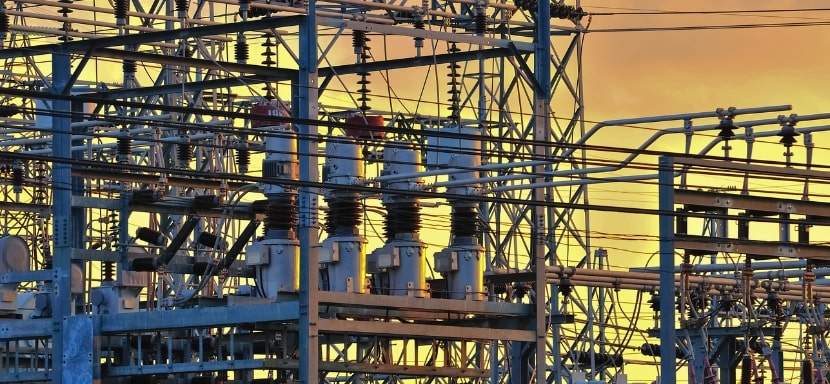
How to Survive an EMP Attack
Imagine waking up to find your entire world plunged into darkness—no electricity, functioning vehicles, or communication. This is the terrifying reality of an EMP (electromagnetic pulse) attack. It can strike without warning, and when it does, it affects more than...

How to Survive a Drone Attack
In today's world, the threat of drone attacks is increasingly becoming a reality. These unmanned aerial vehicles (UAVs) are used for surveillance, military operations, and commercial purposes. However, in the wrong hands, they can become tools of destruction....
More Survival Scenarios

How to Survive a Layoff
When the Floor Falls Out: The Reality of a Layoff Layoffs feel personal—even when they're not. One day, you're responding to Slack messages and forwarding emails. Next, you're staring at your monitor as it logs you out... for good. Whether it's a restructuring, a...

How to Survive a Drug Test
The Cup, The Room, The Truth I never imagined I’d be so emotionally invested in a paper cup. But there I was, standing under the fluorescent hum of a strip-mall clinic, trying to recall the last time I ate a poppy seed bagel. That’s the thing about drug tests—they...

How to Survive an Interrogation
If you've ever been caught in the crosshairs of an overly enthusiastic mall cop or stared down by someone in a uniform with a clipboard and a glare, you’ve felt it — the chilly fingers of interrogation anxiety. And while most of us imagine interrogation scenes as...

How to Survive a Nightclub Shooting
Nightclubs pulse with life—lights flashing, music pounding, bodies packed tight on the dance floor. It’s a place to escape, feel the rhythm, and lose yourself in the crowd. But that same energy can turn deadly in seconds, transforming a night of fun into one of the...

How to Survive a Bachelor Party
A bachelor party is a delicate mix of celebration, chaos, and questionable decision-making, wrapped in the noble intention of sending the groom off into married life with a night he’ll (hopefully) remember. It’s a ritual as old as time—well, as old as men deciding...

How to Survive Your First Time at the Gym
Walking into a gym for the first time can feel like stepping into an alien world. The machines hum with purpose, the regulars move confidently, and you’re left standing there, clutching your water bottle, wondering whether you’re in the right place—or on the right...

How to Survive a Worldwide Communications Breakdown
Imagine waking up to silence. Your phone doesn’t buzz, your email won’t load, and even your local radio station crackles with static. A worldwide communications breakdown has hit. What next? For many, this doomsday scenario may sound like the opening lines of a...
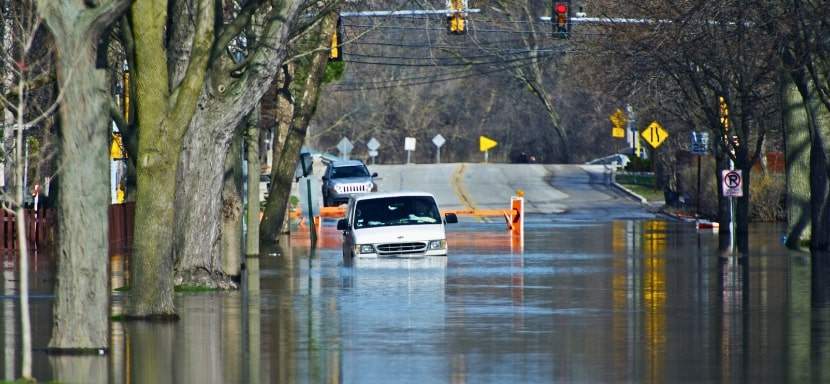
How to Survive a Flash Flood While Driving
Surviving a flash flood while driving requires quick thinking, calmness, and a solid plan to ensure your safety. Preparation can make all the difference between a close call and a catastrophe in emergencies like this. This guide provides practical advice to protect...

How to Build an Emergency Kit
Emergencies don’t knock politely at the door. They barge in, uninvited, like a distant relative with a penchant for drama, turning your world upside down without warning. Whether it’s a power outage, a natural disaster, or an unexpected evacuation, the key to staying...

How to Protect Yourself From Insects in the Wild
There’s nothing like being out in the wild—birdsong echoing through the trees, the fresh scent of earth, and a deep sense of peace that makes you think, “Ah, this is what life is about.” But then comes the buzzing. Mosquitoes, ticks, and flies swoop in like uninvited...
